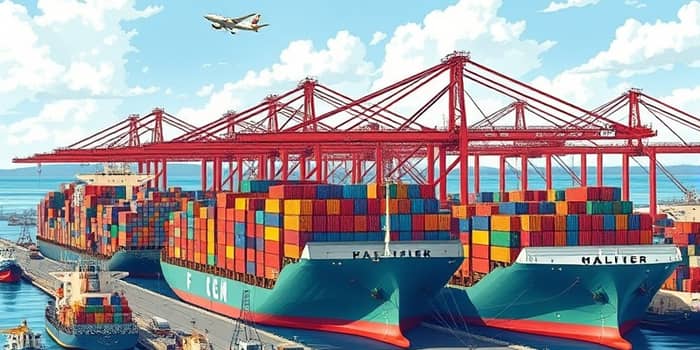
Global trade dynamics are shifting as nations grapple with increasing demand for imported goods and evolving economic strategies. In 2024, total trade in goods and services reached a record level, yet 2025 brings fresh challenges. Protectionist measures, fluctuating currencies, and new supply‐chain models are all playing a role in reshaping balances of trade around the world.
Understanding these forces—and their implications for producers, consumers, and policymakers—is vital. As countries import more, traditional trade surpluses are eroding, spurring debates on tariffs, industrial policy, and the future of globalization.
Last year, global trade in goods and services hit an unprecedented record $33 trillion in global trade. Goods trade grew by 2%, while services soared by 9%. Yet this momentum faces headwinds in 2025 as major economies apply new tariffs and revisit existing agreements.
Geopolitical tensions are rising, with trade disputes between leading powers injecting volatility. Persistent uncertainty makes forecasting difficult, prompting businesses to consider alternative supply chains and hedging strategies.
Import volumes have surged due to shifting consumer preferences worldwide. As incomes rise and lifestyles change, consumption patterns evolve, driving demand for electronics, food products, and luxury items from abroad.
Currency strength further amplifies this trend. When a nation’s currency gains value, foreign goods become cheaper, encouraging higher import levels and narrowing any export advantage.
Tariffs remain a double‐edged sword. Governments use them to shield domestic producers and generate revenue, but they also raise costs for businesses and consumers. Agriculture and textiles often face the highest duties, limiting developing countries’ opportunities to expand exports.
Despite two‐thirds of global trade being tariff‐free, concentrated duties on certain commodities can distort supply chains. Over time, high domestic consumption can lead to deficits if export growth does not keep pace with imports.
In response to tariff threats and transport disruptions, many companies are bringing production closer to home. Reshoring and nearshoring have become prominent strategies, redirecting flows from Asia to regions like Mexico, Turkey, and Eastern Europe.
These shifts create new logistics networks and trade corridors, offering reliability and shorter lead times. However, they may also increase production costs, forcing firms to balance speed against expense.
Cross-border e-commerce is booming, underpinning both imports and exports of consumer goods. Fast parcel delivery and air freight services have expanded rapidly, enabling small and medium enterprises to participate in global markets.
Meanwhile, services trade—spanning finance, IT, and professional offerings—continues to outpace goods growth. Many economies rely on strong services sectors to offset physical goods deficits, creating a more balanced trade profile.
The U.S. agricultural sector exemplifies how rising import demand can erode surpluses. From January to April 2025, agricultural imports reached $78.2 billion, while exports totaled $58.5 billion, resulting in a largest agricultural trade deficit recorded for that period.
The USDA projects the 2025 full‐year deficit could climb to $49.5 billion, up sharply from $31.8 billion in 2024 and $16.7 billion in 2023.
The future of trade balances depends on multiple variables: tariff adjustments, currency movements, and fiscal stimuli. Potential easing of global inflation and renewed economic support—particularly in China—could reignite trade growth, but risks remain high.
Policymakers must weigh the benefits of targeted industrial subsidies against the dangers of reciprocal barriers. International cooperation on standards, digital trade, and climate‐aligned policies may offer pathways to mitigate conflict and foster sustainable growth.
In this evolving landscape, businesses and governments alike should adopt agile strategies, monitor consumer trends, and invest in resilient supply chains. Only by balancing import demand with export capacity can countries stabilize their trade positions and secure long-term prosperity.
References













